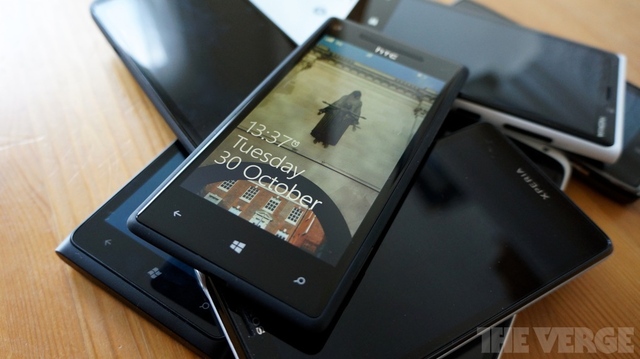Let's be honest, your smartphone's price makes no sense
When good stuff is cheaper than bad stuff, something is broken

As many of you know, I have a tendency to fall back on automotive metaphors when trying to describe the mobile industry. What can I say? Cars are familiar and relatable.
So imagine this: you walk into your local dealer (for the purposes of this analogy, said dealer sells all brands — stay with me). You're offered a brand new 2012 BMW M3 and a 2013 Volkswagen Polo for exactly the same price. Which do you choose?
The BMW, of course. It doesn't matter that it's a year older. It's a better, higher-end car with more features.
So why is it that American wireless carriers continually flout this natural order of economics with virtually every new phone they release?
EVERY MODEL IS PRICED WITH A BLATANT DISREGARD FOR LOGIC
The launch of Nokia's mediocre Lumia 822 on Verizon most recently brought this phenomenon to my attention. As I was reviewing it, I thought, "who in the world should spend $49.99 and sign a two-year contract for this?" The answer, in practical terms, is no one. Not just because it's not a stellar phone, but because you can get the superior Droid RAZR M or the Droid Incredible 4G LTE for the same price. You can also get an iPhone 4 — still a standard-setting smartphone even today — for free. And if you're specifically in the market for a Windows Phone, I'd bet a dollar that the superior HTC 8X is under $100 within a few weeks. Subsidized, on-contract sticker prices on these phones fluctuate with the frenetic unpredictability of the stock market.
The reason, in part, is that phone models are still being updated and replaced at an unprecedented pace that simply isn't sustainable. Even OEMs that have made a conscientious effort to slow their update cycles and reduce the number of models in their portfolios at any given time are failing: take HTC, for instance, which refreshed the One X with the One X+ just seven months later. Nokia did the same with the Lumia 900 and 920.
SEVEN MONTHS IS NOT A REASONABLE LIFE CYCLE FOR ANY DURABLE PRODUCT
Seven months is not a reasonable life cycle for any durable product. You wouldn't buy a new TV, game console, Blu-ray player, refrigerator, or car every seven months. In fact, if a manufacturer discontinued and replaced your TV after seven months, you'd be pissed. But it's like an addiction: carriers and OEMs need the high they get from the fleeting sales bump after the release of an incrementally new model, a bump that quickly flatlines. Hilarious price adjustments ensue; a $199.99 phone falls to $149.99, $99.99, $49.99, and eventually free over the course of a single year.
And that leads to a traffic jam of phones and price points. High-end models that commanded $200 on contract just a few short months ago must be slashed to make room in the lineup for a new flagship. $50 phones become free. There's no room for free phones to be discounted, and inventory needs to be cleared. Suddenly, a $99.99 One X is going up against a $199.99 Galaxy S III on AT&T, two phones that were designed from the start to go head-to-head.
THIS INDUSTRY IS EATING ITSELF ALIVE
The basic laws of supply and demand start to break down. That's how you end up with your choice of a 2012 BMW or a 2013 Volkswagen for the same price. You'd scratch your head at the car dealer, and you should be scratching your head in the Verizon store.
This industry is eating itself alive, and these nonsensical prices are an early warning sign. Carriers urgently need to incentivize OEMs to slow down, not speed up. While Apple — and to some extent, Samsung — stay even-keeled with a single flagship phone per year, the rest of the industry is still chasing its collective tail, confusing customers, and leaving a mess of the store shelves.
No comments:
Post a Comment